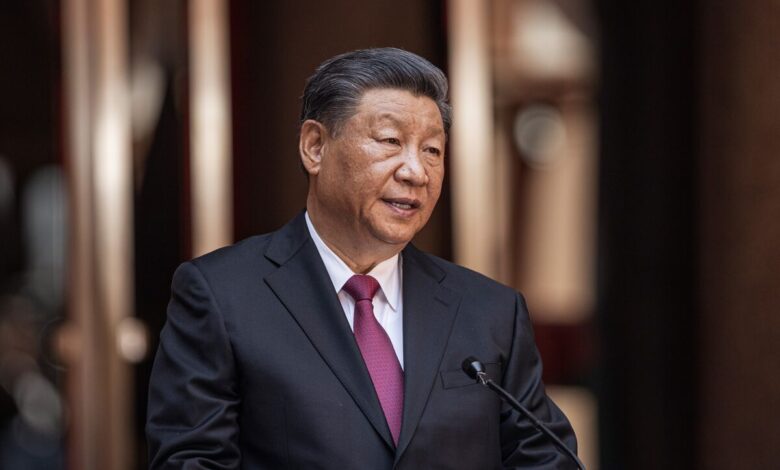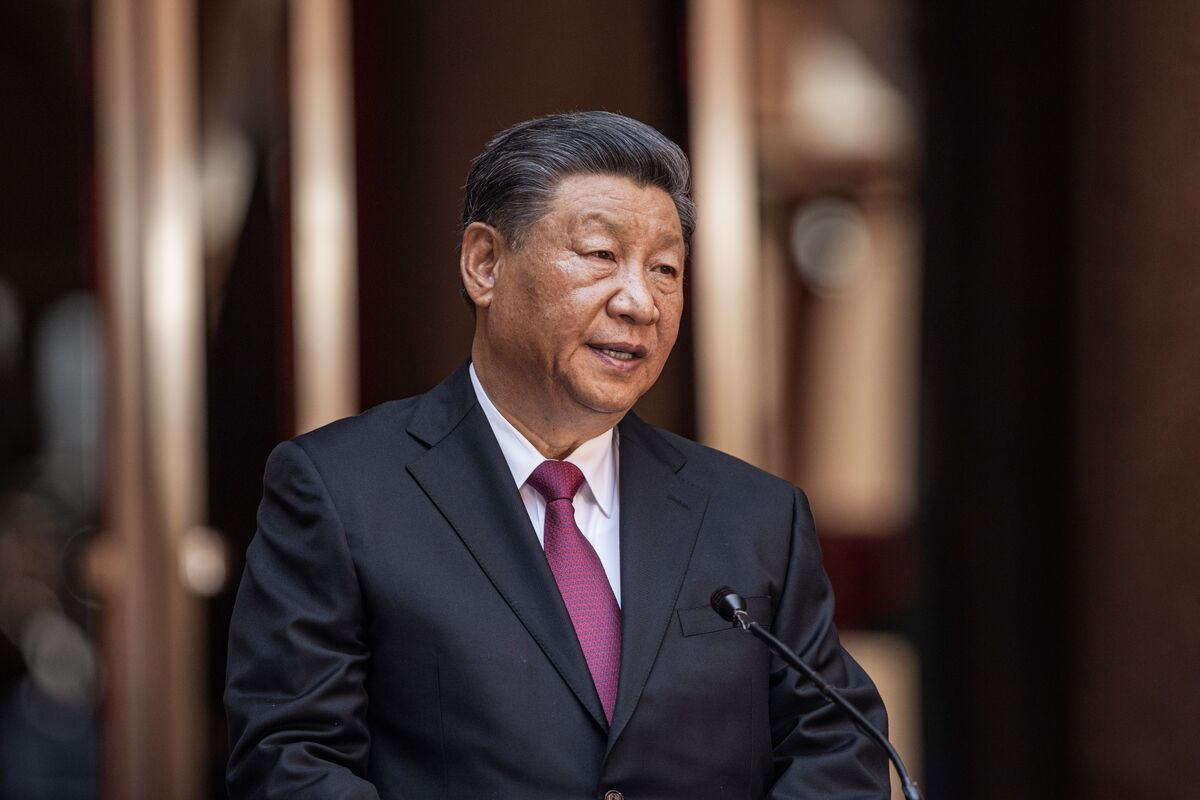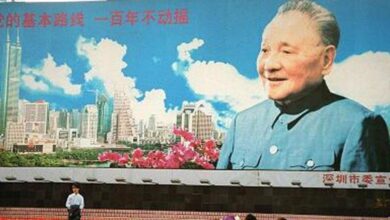
Even Xi Jinping Is Struggling to Fix Regional Inequality
Even Xi Jinping is struggling to fix regional inequality – a stark reality that underscores the immense challenge facing China. This vast nation, a powerhouse of global economics, grapples with a deep chasm separating its booming coastal cities from its less developed inland regions. We’ll delve into the historical roots of this disparity, examining decades of policy decisions and their impact on everything from access to healthcare and education to the very fabric of society.
Prepare to explore the complexities of China’s economic landscape and the ambitious, yet often frustrating, attempts to bridge this gap.
The sheer scale of the inequality is staggering. Coastal provinces boast GDP per capita figures many times higher than those in the west, leading to significant discrepancies in living standards and opportunities. This isn’t just about economics; it’s about social justice, impacting access to quality healthcare, education, and even basic infrastructure. We’ll analyze specific policies implemented under Xi Jinping’s leadership, comparing them to previous administrations, and exploring the successes and failures along the way.
The journey will uncover the inherent difficulties in tackling deeply ingrained socioeconomic structures and the political obstacles that frequently hinder progress.
The Extent of Regional Inequality in China

China’s remarkable economic growth over the past few decades has been accompanied by a stark reality: significant regional inequality. While coastal provinces have experienced booming growth, many inland regions lag considerably behind, creating a complex web of social and economic disparities that continue to challenge the government. This imbalance isn’t merely a matter of differing economic output; it manifests in unequal access to vital resources and opportunities, impacting the lives of millions.
Economic Disparity Between Coastal and Inland Regions
The disparity in economic development between China’s coastal and inland regions is readily apparent when examining GDP per capita data. Coastal provinces like Guangdong, Zhejiang, and Jiangsu consistently boast GDP per capita figures significantly higher than those in inland provinces such as Guizhou, Gansu, and Yunnan. For example, in 2021 (data varies slightly depending on the source and year), Guangdong’s GDP per capita was estimated to be several times higher than that of Guizhou.
This vast difference reflects the concentration of manufacturing, finance, and technology industries along the coast, leaving inland areas with predominantly agrarian economies and limited access to advanced industries. This economic imbalance fuels a cascade of social inequalities.
Social Consequences of Regional Inequality
The economic disparity translates into significant differences in access to essential services and infrastructure. The following table illustrates this:
| Region | Education Access | Healthcare Access | Infrastructure Quality |
|---|---|---|---|
| Coastal Regions (e.g., Guangdong, Shanghai) | Generally high access to quality education, including international schools and universities; higher enrollment rates. | Access to advanced medical facilities, specialists, and technologies; higher life expectancy and lower infant mortality rates. | Well-developed transportation networks (high-speed rail, highways, airports); reliable electricity and internet access; modern urban infrastructure. |
| Inland Regions (e.g., Guizhou, Gansu) | Limited access to quality education, particularly in rural areas; lower enrollment rates and fewer opportunities for higher education. | Limited access to advanced medical facilities and specialists; lower life expectancy and higher infant mortality rates; greater reliance on traditional medicine. | Poorly developed transportation networks; unreliable electricity and internet access; limited access to clean water and sanitation; underdeveloped urban infrastructure. |
Historical Factors Contributing to Uneven Development
The current regional inequality is rooted in historical policies and geographical factors. During the planned economy era, resource allocation prioritized industrial development in coastal areas, strategically positioning them for export-oriented growth. The “open door” policy of the late 1970s further concentrated investment and development in Special Economic Zones (SEZs) located along the coast. This strategic focus, while beneficial for overall economic growth, exacerbated the existing disparities between coastal and inland regions.
Furthermore, historical factors like geographical limitations (e.g., mountainous terrain in many inland provinces) and the legacy of historical underdevelopment have also played a role in perpetuating the imbalance. The Hukou system, a household registration system, also restricted the movement of labor, hindering the migration of skilled workers from inland to coastal regions and limiting opportunities for inland development.
Even Xi Jinping’s ambitious plans are struggling to bridge the vast economic chasm between China’s coastal powerhouses and its less developed inland regions. It’s a monumental task, and ironically, it highlights how even the most powerful governments can’t solve every problem, much like the current situation with artificial intelligence, which, as this article points out, artificial intelligence is losing hype and failing to deliver on some of its initial, overblown promises.
The parallels are striking – both show the limits of even the most advanced technological and political solutions in tackling complex, deeply rooted issues. Ultimately, addressing China’s regional inequality requires long-term, multifaceted strategies, just as AI needs realistic expectations and refined approaches.
Xi Jinping’s Policies Addressing Regional Inequality
Xi Jinping’s leadership has witnessed a renewed focus on tackling China’s persistent regional disparities. While acknowledging the significant progress made under previous administrations, his approach incorporates a distinct emphasis on coordinated development, ecological considerations, and poverty alleviation with a specific focus on rural revitalization. This shift reflects a more nuanced understanding of the complexities involved in bridging the economic gap between China’s coastal powerhouses and its less developed inland regions.Xi Jinping’s strategies for regional development differ significantly from his predecessors in their scale and integrated approach.
Previous leaders focused primarily on economic growth through export-oriented manufacturing and attracting foreign investment, often concentrating development in coastal areas. Xi’s policies, while building upon these foundations, explicitly aim for a more balanced and sustainable distribution of wealth and opportunity across the country. This includes a stronger emphasis on domestic consumption, technological innovation, and environmental protection.
Key Policies and Initiatives
Xi Jinping’s administration has implemented a series of interconnected policies to address regional inequality. These policies are not isolated initiatives but rather components of a broader national strategy aiming for “common prosperity.” The overarching goal is to create a more equitable society while maintaining overall economic growth. This strategy acknowledges that purely economic growth, without addressing social equity, can exacerbate existing inequalities.
Even Xi Jinping’s massive infrastructure projects haven’t fully solved China’s persistent regional inequality; the scale of the challenge is immense. It makes you wonder about the feasibility of solving global issues, like whether any leader can truly achieve lasting peace, a question explored in this article on whether will donald trump stop the wars in the middle east.
Ultimately, tackling deep-rooted inequality, whether in China or the Middle East, requires long-term commitment and multifaceted strategies.
Strategies for Promoting Development in Less-Developed Regions
The strategies employed to promote development in less-developed regions are multifaceted and often interwoven. They are not mutually exclusive but rather complementary approaches working towards a common goal. The government utilizes a combination of fiscal incentives, infrastructure investment, and targeted social programs to achieve a more balanced regional development.
- Increased Infrastructure Investment: Massive investments in transportation networks (high-speed rail, highways), energy grids, and communication infrastructure are crucial in connecting remote areas to national markets and facilitating economic activity. For example, the significant expansion of high-speed rail lines has drastically reduced travel time between previously isolated regions and major economic hubs, fostering trade and tourism.
- Targeted Industrial Relocation: Policies encouraging the relocation of industries from overcrowded coastal areas to less developed inland regions aim to create jobs and stimulate economic growth in those areas. This often involves offering tax breaks, subsidies, and other incentives to businesses willing to move. The development of industrial parks and special economic zones in inland provinces is a key element of this strategy.
Even Xi Jinping’s ambitious plans are struggling to bridge the vast chasm of regional inequality in China. It makes you wonder about the priorities of other leaders; for instance, this article on ebrahim raisi was obsessed with the security of the people highlights a very different focus. Ultimately, addressing such deep-seated inequalities requires a multifaceted approach, something that even the most powerful leaders find challenging.
- Poverty Alleviation Programs: Extensive poverty alleviation programs, including targeted subsidies, job training, and rural infrastructure improvements, have been central to Xi Jinping’s efforts. The goal of eradicating extreme poverty by 2020 was largely achieved, a significant milestone in reducing regional disparities. These programs often focus on improving access to education, healthcare, and social security in rural areas.
- Rural Revitalization Strategy: This comprehensive strategy aims to improve the living standards and economic opportunities in rural areas. It includes investments in agriculture, rural infrastructure, and public services, as well as initiatives to promote rural tourism and e-commerce.
Comparison with Previous Leaders’ Policies
Compared to previous leaders, Xi Jinping’s approach demonstrates a greater emphasis on coordinated regional development, sustainability, and social equity. While Deng Xiaoping’s reform and opening-up policies spurred remarkable economic growth, they also led to significant regional imbalances. While subsequent leaders continued this growth trajectory, Xi Jinping’s policies represent a more explicit attempt to correct these imbalances and foster a more inclusive form of development.
The scale and integration of initiatives under Xi Jinping’s leadership are unprecedented, reflecting a stronger commitment to addressing regional inequality as a key element of national development.
Challenges in Addressing Regional Inequality: Even Xi Jinping Is Struggling To Fix Regional Inequality
Bridging the vast development gap between China’s prosperous coastal regions and its less developed inland areas presents a formidable challenge, one that even Xi Jinping’s ambitious initiatives have struggled to fully overcome. The difficulties are multifaceted, stemming from deeply ingrained socioeconomic structures and stubborn geographical realities, coupled with significant political and administrative hurdles.The inherent difficulties in achieving balanced regional development are deeply rooted in China’s geography and history.
Vast distances and challenging terrain, particularly in the western provinces, hinder infrastructure development and increase the cost of transportation and communication. This geographical isolation limits access to markets, education, and healthcare, perpetuating a cycle of poverty and underdevelopment. Furthermore, decades of centrally planned economic policies, while fostering overall growth, inadvertently exacerbated regional disparities by concentrating investment and resources in already-developed coastal areas.
This historical legacy continues to shape economic patterns and power dynamics.
Geographical Barriers and Infrastructure Deficiencies
The sheer scale of China’s territory and the significant variations in topography pose substantial obstacles. Mountainous regions in the west, for example, require costly and complex infrastructure projects to connect them to the national transportation network. The high cost of building roads, railways, and communication networks in these areas often outweighs the immediate economic benefits, leading to underinvestment.
This lack of infrastructure not only restricts the movement of goods and people but also limits access to essential services like education and healthcare, further hindering development. For instance, the construction of high-speed rail lines into the less developed western regions, while a significant step forward, has been plagued by delays and cost overruns, highlighting the inherent difficulties.
Resistance to Policy Implementation: Bureaucratic Inertia and Local Vested Interests
The implementation of policies aimed at reducing regional inequality often encounters resistance from various sources. Bureaucratic inertia, characterized by slow decision-making processes and a lack of coordination between different government agencies, can significantly delay or even derail projects. Local vested interests, particularly those benefiting from the status quo, may actively oppose policies that threaten their power or economic advantages. This resistance can manifest in various forms, including bureaucratic delays, lack of cooperation, and even outright obstruction.
For example, some local governments may prioritize projects that benefit their immediate constituents over broader national development goals, hindering the effective redistribution of resources.
Specific Projects Facing Significant Challenges
The ambitious “Go West” strategy, launched in the late 1990s to stimulate economic growth in western China, serves as a case study. While it led to some improvements in infrastructure and investment, it also faced criticism for uneven implementation and insufficient attention to local needs and environmental concerns. Many projects experienced delays and cost overruns, and the benefits were not always evenly distributed across the western regions.
Similarly, initiatives aimed at developing rural areas and boosting agricultural productivity have often struggled with issues of land ownership, access to credit, and the lack of skilled labor. The uneven distribution of resources and opportunities continues to fuel resentment and social unrest in certain regions.
The Role of Specific Sectors in Regional Development

China’s vast regional disparities are deeply intertwined with the uneven distribution and performance of its economic sectors. Understanding the contribution of agriculture, manufacturing, and technology, along with the influence of foreign investment and migration patterns, is crucial to grasping the complexities of this challenge. A nuanced approach is needed, moving beyond simple comparisons and acknowledging the interplay between these factors.
The contribution of different sectors varies significantly across China’s diverse regions. Coastal provinces, for example, have historically benefited from a stronger manufacturing base and greater access to foreign investment, while inland regions often rely more heavily on agriculture. This uneven distribution has perpetuated existing inequalities, creating a complex web of interconnected challenges.
Sectoral Contributions Across Regions, Even xi jinping is struggling to fix regional inequality
The following table offers a simplified comparison of sectoral contributions across three broad regions: Coastal (e.g., Guangdong, Jiangsu, Zhejiang), Central (e.g., Hunan, Hubei, Henan), and Western (e.g., Sichuan, Yunnan, Guizhou). It’s important to note that these are broad generalizations, and significant variations exist within each region. Data limitations also prevent a completely precise representation. The percentages represent approximate shares of regional GDP.
| Region | Agriculture (%) | Manufacturing (%) | Technology (%) | Services (%) |
|---|---|---|---|---|
| Coastal | 5 | 45 | 20 | 30 |
| Central | 15 | 30 | 10 | 45 |
| Western | 25 | 20 | 5 | 50 |
The Role of Foreign Investment
Foreign direct investment (FDI) has played a significant role in China’s economic growth, but its distribution has exacerbated regional disparities. Coastal regions, with their established infrastructure and proximity to ports, have attracted a disproportionate share of FDI, fueling their economic advancement. This concentration has left inland and western regions relatively underdeveloped, lacking the capital and technological advancements that FDI can bring.
Government policies aimed at attracting FDI to less developed regions have had limited success, often hampered by infrastructure deficiencies and a less skilled workforce.
The Impact of Urbanization and Migration Patterns
China’s rapid urbanization has led to significant internal migration, with millions of rural residents moving to urban centers in search of better opportunities. While this migration has contributed to economic growth in urban areas, it has also left behind a shrinking and aging rural population, further hindering the development of rural regions. This creates a vicious cycle: rural areas lack the workforce and economic activity to attract investment, while urban areas become increasingly congested and face their own set of challenges.
The concentration of human capital in coastal megacities like Shanghai and Shenzhen, for example, contributes to the economic dynamism of these areas, but simultaneously drains talent and resources from less developed regions. Government initiatives aimed at managing this migration and promoting balanced development are ongoing, but the challenges remain substantial. For example, the “hukou” system, which restricts access to social services based on residency, continues to be a significant barrier to equitable development.
China’s struggle to overcome regional inequality is a complex and multifaceted issue, one that even the powerful leadership of Xi Jinping hasn’t fully conquered. While ambitious initiatives aim to stimulate growth in less-developed regions, deeply rooted historical factors, geographical challenges, and bureaucratic hurdles present significant obstacles. The path forward requires innovative policies, strategic investment, and a concerted effort to address the underlying social and economic disparities.
The ultimate success or failure will have profound consequences for China’s future stability and prosperity, shaping not only its domestic landscape but also its global influence.





